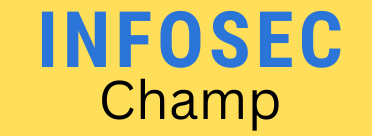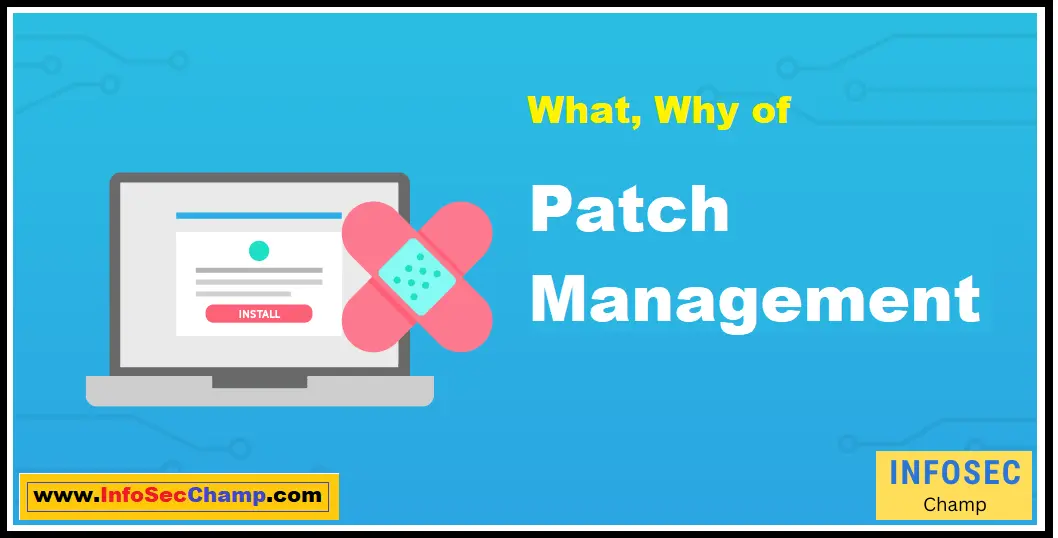Locating, acquiring, downloading, installing, and testing patches (miniature software upgrades) for applications and operating systems is the process known as “patch management.” It’s an important step that helps guarantee the computer’s software is up-to-date and secure. Administrators typically determine which patches are needed for their systems and then either apply them manually or automate the process with a patch management system.
After applying updates, administrators may need to verify that all necessary changes were made and that systems are still functioning normally. Patch management is essential since it helps prevent exploitable software vulnerabilities that can be utilized by hackers and other malicious actors. In addition to bolstering a system’s reliability and performance, it can also aid in preventing security breaches.
What is the importance of patch management? | Why is patch management required for enterprise? | Why do we need patch management?
Numerous factors highlight the significance of patch management:
- Security: When it comes to software, one of the most important functions of patch management is fixing security holes. When a security hole is discovered in software, the developer often releases a patch to close it. By installing these updates as soon as possible, you can help protect your network from intrusion by hackers and other malicious users.
- Stability: Stability Patch management can improve a system’s stability by deploying updates that fix bugs and other issues. By doing so, you reduce the risk of system downtime and other problems that could disrupt your business.
- Compliance: Patch management may be required to meet legal or regulatory standards, which is known as “compliance.” For example, many corporations have stringent regulations about the upkeep of secure and current systems; violators face fines and other consequences.
- Performance: The performance of a system can be improved by deploying patches because doing so optimizes the program and fixes any issues that may be slowing it down.
As a whole, patch management is an essential process for making sure a system is secure, trustworthy, and compliant, and that it is also running at peak efficiency.
What are the three types of patch management?
There are many different approaches to patch management, however, the following are some of the most well-liked ones:
- Manual patch management: Manual patch management is the process of manually selecting, locating, and installing fixes. This might work for small firms or systems that just need a few patches to be applied, but it can be laborious and error-prone.
- Automated patch management: Using a patch-management system, automated patch management involves finding, acquiring, and installing patches. Automated patch management might be more reliable and less prone to errors, but it might be more expensive to set up because it requires specialist software.
- Third-party patch management: Third-party patch management is the practice of entrusting a third-party service provider with patch management on behalf of an organization. This could be a less expensive option if a business has the skills or expertise to undertake patch management in-house.
Overall, the best patch-management strategy for a business depends on its size, resources, and unique requirements.
What is a patch management example?
A business with 100 PCs running different operating systems and software programs could serve as an illustration of patch management. All of these systems must be current and secure, and that is the job of the company’s IT administrator.
To accomplish this, the administrator may automate the process of determining which patches are pertinent to the organization’s systems, then locating and applying those patches using a patch management system. The patch-management system may also be configured by the administrator to routinely check for new patches and install them as necessary.
The administrator may also need to confirm that the systems are still operating properly and that the patches were correctly implemented after they have been installed. The administrator may need to investigate and resolve any concerns that are found.
The identification, acquisition, installation, and verification of patches all work together to make sure that the company’s systems are current and secure, which can assist guard against security flaws and enhance system stability and performance.
What is good patch management? | What is the patch management process?
The patch management procedure frequently includes the following steps:
- Identification: The first step in the patch-management process is to locate the patches that are applicable to the systems of a business. To determine which patches fix known vulnerabilities or resolve other issues, it may be essential to review data from software vendors or security alerts.
- Acquisition: Once the necessary patches have been found, they must be bought and downloaded to the organization’s systems. The patches can need to be manually retrieved via a patch-management system or automatically retrieved from the website of the software vendor.
- Installation: The fixes must then be installed in the company’s systems. This may involve using a patch management system or automating the process by running installation software.
- Verification: It’s critical to check that the systems are still working regularly and that the patches were correctly applied once the fixes have been installed. It might be necessary to run tests or examine system logs to verify that the adjustments were made correctly.
- Documentation: The patch-management process must be meticulously documented, including the patches that were applied, when they were applied, and any issues that may have arisen. You can resolve problems and fulfill legal or regulatory requirements by using these documents.
The goal of the patch-management process, which strives to keep an organization’s systems up-to-date and secure, is to identify, obtain, install, and verify fixes.
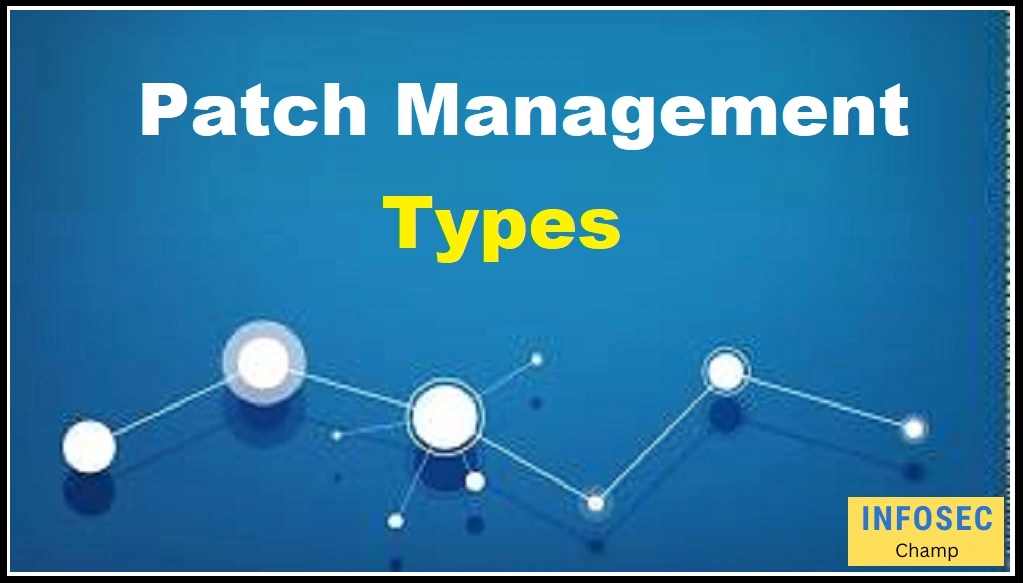
What are the types of patches?
Various patch types may be used in patch management, including:
- Security patches: These updates correct bugs in software and operating systems that could be exploited by hackers or other bad guys. They are frequently made public as soon as a vulnerability is discovered and may be essential for maintaining the security of a system.
- Bug fixes: These updates repair errors or flaws in the program that could cause the system to run more slowly or perform worse. They could be made available to fix a specific issue or as part of a larger software upgrade.
- Feature updates: These updates add new features or functionalities to software or operating systems. They may be voluntary or required, depending on the needs of the business.
- Service packs: Service packs are sizable collections of fixes for a range of issues, including bugs, security flaws, and feature updates. They might be made available all at once or in a series of shorter updates.
A system can generally receive a number of updates to address a variety of issues or add new capabilities.
Who is responsible for patch management?
Patch management is frequently the responsibility of the IT department or a specific IT administrator, with the IT manager serving as the roll-up. This person or group is in charge of deciding which patches are necessary for the organization’s systems, buying, installing, and verifying that they have been properly applied.
In larger companies, patch management may come under the purview of a specialized team or be handled as a part of a broader IT management job. Smaller businesses may just have one IT administrator, or they may contract another service provider to do patch administration.
Depending on the size and structure of the company, a combination of human and automated methods may be employed to manage patches to guarantee that the systems are safe and current.
Is patch management part of ITIL?
Yes, patch management is covered by the Information Technology Infrastructure Library (ITIL) framework, a collection of best practises for managing IT services. The ITIL framework views patch management as a key task for maintaining the dependability, security, and effectiveness of IT systems.
The ITIL paradigm’s “Service Operation” phase, which deals with managing IT services on a daily basis, frequently includes patch management. The patch-management process entails the identification of pertinent patches, their acquisition, installation, and verification that they have been correctly deployed.
The ITIL framework also offers guidelines for describing the patch-management procedure and guaranteeing that fixes are applied in a timely and orderly manner in order to lessen the impact on business operations.
Patch management is an essential part of the ITIL framework and is essential for assuring the stability, security, and performance of IT systems.
What is NIST control for patching?
The National Institute of Standards and Technology (NIST), a federal agency, develops technology standards and guidelines, including those for patch management.
In NIST Special Publication 800-40, “Guide to the Process of Patch-Management,” NIST provides guidance on the patch management procedure and specifies a set of controls to ensure that updates are applied quickly and effectively.
Several of the NIST controls for patching include the following:
- Establishing a patch management policy: Defining the roles and responsibilities involved in patch management as well as the procedures to be followed in order to find, obtain, install, and validate fixes are all part of creating a patch-management policy.
- Finding pertinent patches: locating relevant patches Information from software vendors or security alerts must be analyzed in order to determine which fixes are relevant to the organization’s systems.
- Patch testing: Prior to installation, patches must be tested to ensure they won’t break the system. NIST suggests testing upgrades in a staging environment before implementing them on live systems.
- Patch installation: NIST advocates quick patch installation to minimize the risk of security vulnerabilities or other issues.
Patch verification is essential after fixes have been implemented to make sure they were applied correctly and that the systems are still functioning normally.
Overall, NIST provides guidance on the patch-management process as well as suggestions for controls to help ensure that patches are applied in a timely and effective manner.
Patch management in cyber security
In order to prevent operating system and software defects that could be used by hackers or other malicious actors, patch management is a critical part of cybersecurity. By swiftly putting changes into place, organizations may aid in preventing security breaches and protecting against cyber attacks.
In the context of cybersecurity, patch management frequently involves the following procedures:
- To determine which patches fix known vulnerabilities or address other issues, one must look at data from software vendors or security advisories.
- Patch acquisition and installation: The organization’s systems must be patched after the identification of the necessary patches. This can require automating the procedure using a patch-management system or applying the patches by hand.
- Patch verification: Patch confirmation It’s crucial to verify that the patches were appropriately applied and that the systems are still functioning regularly after they have been installed. It might be necessary to run tests or examine system logs to verify that the adjustments were made correctly.
- The steps taken in patch management should be recorded, as well as the patches that were applied, when they were applied, and any issues that cropped up. You can resolve problems and fulfill legal or regulatory requirements by using these documents.
Patch management is an essential part of cybersecurity that aids in preventing security flaws and breaches.
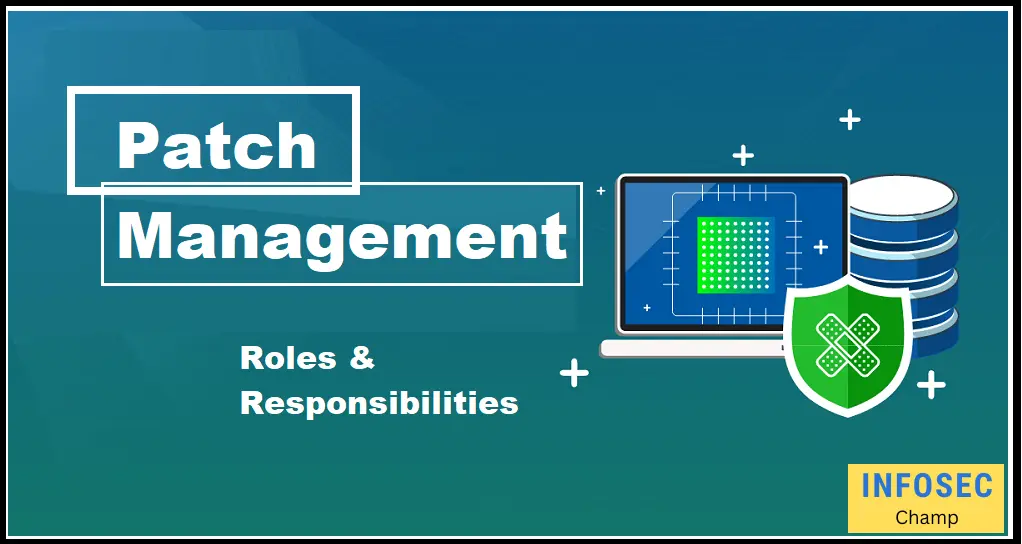
Patch management roles and responsibilities
Varied personnel may have different roles and responsibilities for patch management depending on the size and structure of a firm. In general, the following roles and duties may be associated with patch management:
- IT administrator: This person or group is responsible for deciding whether patches are necessary for the organization’s systems, purchasing and installing the fixes, and ensuring that they were installed correctly. The deployment and upkeep of the patch management system may also fall under the purview of the IT administrator in order to automate the process.
- Management: Establishing patch-management policies and processes, as well as approving the money and resources needed for patch management, may fall under the purview of management.
- Software providers: Software developers are responsible for creating patches to address bugs or other issues with their software. They might also provide guidance and details on applying the patches.
- End users: End users may be in charge of updating their own systems with patches or reporting to the IT manager any issues they encounter.
The roles and responsibilities for patch management may include IT administrators, management, software providers, and end users, depending on the size and structure of the business.
What is SCCM patching?
System Center Configuration Manager is a piece of systems administration software made by Microsoft (SCCM). The ability of SCCM to automate patch management, including the discovery, acquisition, installation, and verification of patches for various programmes and operating systems, is one of its key capabilities.
By installing patch-management policies using SCCM, administrators can specify when and how patches are applied to systems inside an organization. Additionally, SCCM can be configured to automatically check for fresh updates and install them as required.
In addition to patch management, SCCM provides a variety of other services, such as the ability to inventory hardware and software, distribute updates and applications, and maintain tabs on the health of systems.
Overall, SCCM is a useful tool for automating patch management as well as monitoring and maintaining systems inside of an organization.
Limitation of WSUS
In order to handle the distribution of updates and patches for Microsoft products including Windows and Microsoft Office, Microsoft developed Windows Server Update Services (WSUS), a patch management tool.
WSUS has the following limitations:
- Compatibility: Because WSUS is only compatible with Microsoft products, it cannot be used to manage fixes for non-Microsoft goods.
- Size restrictions: Larger enterprises with more systems to monitor may find WSUS inappropriate because it can only manage updates for up to 100,000 PCs.
- Lack of sophisticated features: WSUS lacks some sophisticated capabilities seen in other patch management platforms, such as the ability to test patches in a staging environment before deploying them to production systems.
- Complexity: Setting up and configuring WSUS can be difficult, especially for businesses that are new to patch management.
Although WSUS is a good tool for handling Microsoft product patches overall, there are a few issues with it that may make it less suitable for specific enterprises or use cases.
What are the differences between SCCM & WSUS?
Microsoft has created two patch-management tools: Windows Server Update Services (WSUS) and System Center Configuration Manager (SCCM). But there are some significant variations between the two:
- Scope: SCCM is a more all-encompassing system management tool that offers much functionality beyond patch management, including the capacity to inventory hardware and software, deploy software updates and applications, and keep track of the health of systems. WSUS is only capable of managing updates for Microsoft products and is devoted solely to patch management.
- Compatibility: WSUS is exclusively compatible with Microsoft products, but SCCM is compatible with a wider variety of software and operating systems, including non-Microsoft items.
- Limitations on size: WSUS can only manage updates for up to 100,000 computers, while SCCM can manage updates for an unlimited number of computers.
- Sophisticated features: WSUS lacks a number of advanced features that SCCM offers, such as the capacity to test patches in a staging environment before deploying them to live systems.
While WSUS focuses solely on patch management for Microsoft products, SCCM is a more all-encompassing systems administration tool that offers a larger variety of functions and is more versatile in terms of compatibility.
Third-party patches using SCCM deployment
To deploy patches or fixes from firms other than Microsoft to systems inside an organization, use System Center Configuration Manager (SCCM).
To accomplish this, the administrator would need to execute the following actions:
- Determine the pertinent patches: Studying data from the software vendor or security advisories is critical to determine which fixes are necessary for the organization’s systems.
- How to get the patches: To automatically get the fixes, the administrator would need to use a patch-management system or download them from the application vendor’s website.
- Create a deployment package: The fixes and any necessary installation instructions must then be included in a deployment package in SCCM by the administrator.
- Deploy the patches: Installing the patches After preparing the deployment package, the administrator can use SCCM to install the fixes to the necessary systems. This method may also entail deciding when the patches should be applied and specifying which systems or groups of systems should do so.
- Verify the patches: The administrator should check that the systems are still functioning properly and that the patches were properly implemented after they have been installed.
In conclusion, SCCM can be used to distribute external updates to systems within an organization, but it’s critical to follow the correct steps to ensure that the patches are deployed correctly and without issues.
Patch management strategies
Various methods, such as the following, can be used by organizations to handle patches effectively:
- Automation: Patches can be applied reliably and on time by automating the patch management process. This can require employing a patch management system to automatically locate, acquire, and install patches as well as regularly check for new fixes.
- Testing: It is essential to test patches before deploying them to live systems to ensure that they won’t cause any issues. This may require testing fixes on a small number of systems or in a staging environment before deploying them to the entire enterprise.
- Prioritization is important since patch management can use a lot of resources. Patches should be ranked according to their importance and potential impact on the company. Security updates should always be delivered first, while non-critical issue patches can be applied with a lower priority.
- Documentation: It’s essential to keep track of each stage of the patch management procedure, including the patches that were installed, when they were installed, and any issues that occurred. You can resolve problems and fulfill legal or regulatory requirements by using these documents.
- Communication: Effective communication is essential to patch management since it ensures that all parties involved are aware of the patches being applied and any potential effects on the Organization. Speaking with software developers, IT professionals, and end users may be necessary to coordinate the patch management process.
Implementing a combination of these strategies can help businesses manage patches effectively while ensuring the security and up-to-dateness of their systems.
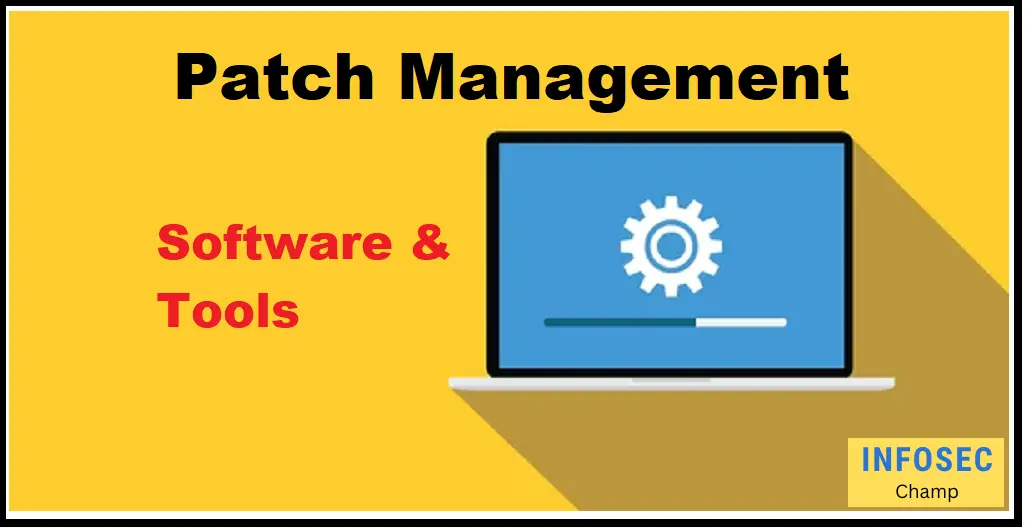
Top 20 patch management software, patch management tools | Microsoft WSUS Alternative Patch Management Tools
For organisations, here are 20 of the most popular options for patch management software:
- System Center Configuration Manager (SCCM)
- Windows Server Update Services (WSUS)
- BigFix
- SolarWinds Patch Manager
- ManageEngine Patch Manager Plus
- Ivanti Patch for Windows
- PDQ Deploy
- LANDesk Management Suite
- Kaseya VSA
- Patch My PC
- GFI LanGuard
- Shavlik Protect
- IBM Tivoli Endpoint Manager
- Red Hat Satellite
- SUSE Manager
- Dell KACE K1000
- Micro Focus ZENworks
- BMC Server Automation
- Puppet Enterprise
- Chef Infra
In sum, the aforementioned software options for patch management can aid businesses in automating the process of locating, acquiring, and installing fixes and confirming their correct deployment. The best patch management strategy will depend on the specific needs and budget of a business.
Patch management policy
An official document that outlines a company’s patch management procedures is called a patch management policy. Along with the roles and responsibilities for patch management, the procedure for finding, acquiring, acquiring, installing, and verifying patches should all be specified in the policy.
These additional elements could be included in a patch management policy:
- Scheduling: The policy should specify how often patches should be examined and installed, as well as any potential maintenance windows or downtime.
- Prioritization: The policy should outline the criteria for allocating a patch’s importance and potential impact on the firm. Patches for non-critical issues, like security, may be given a greater priority than patches for security.
- Testing: The policy should specify any standards or norms that should be adhered to during testing, as well as how patches should be tested before being applied to live systems.
- Communication: The policy should define how patch management procedures will be communicated to the appropriate parties, such as management, IT staff, and end users.
- Documentation: The policy should stipulate how the patch management process must be documented, including which patches were applied, when they were applied, and any issues that occurred.
In general, a patch management policy assists in ensuring that fixes are implemented consistently and sequentially, lowering the likelihood of security flaws or other issues.
What is Microsoft Windows Patch Management?
Microsoft Windows Patch Management is the term used to describe the process of managing patches for Microsoft Windows operating systems and other Microsoft products. This can require finding the appropriate fixes, buying them, installing them, and making sure they worked as intended.
System Center Configuration Manager (SCCM) and Windows Server Update Services are two technologies that can be used for patch management for Microsoft Windows (WSUS). By enabling users to automatically search, get, and install patches as well as often check for new patches, these solutions can help automate the patch management process.
In general, Microsoft Windows Patch Management plays a significant role in ensuring the stability, security, and performance of computers running Microsoft Windows operating systems and other Microsoft products.
Windows server patching
Windows servers are “patched” when patches are applied to them to fix issues, close security holes, or provide new functionality. Patching Windows servers on a regular basis is necessary to keep them stable, secure, and performant.
Two technologies that can be used to manage patches for Windows servers are System Center Configuration Manager (SCCM) and Windows Server Update Services (WSUS). Through the automatic discovery, acquisition, and installation of patches as well as the regular check for new patches, these technologies can help automate the patch management process.
Typically, the patch management process for Windows servers involves the following steps:
- Finding pertinent patches: It is necessary to analyze information from Microsoft or security advisories to determine which fixes are necessary for the company’s Windows servers.
- Purchasing and applying patches: After finding the relevant fixes, they must be bought and installed on the servers. Either manually applying the fixes or utilizing a patch management system to automate the procedure could be involved in this.
- Examining patches: After servers have been updated, it’s important to verify that the fixes were appropriately implemented and that all functions are still working as expected. It might be necessary to run tests or go over system logs to ensure that the modifications were implemented correctly.
- The patch management process: The patch management procedure should be meticulously documented, including the patches that were applied, when they were applied, and any issues that occurred. You can meet legal or regulatory requirements and resolve problems by using these documents.
Overall, continuous updating is necessary to ensure the stability, security, and efficiency of Windows servers.
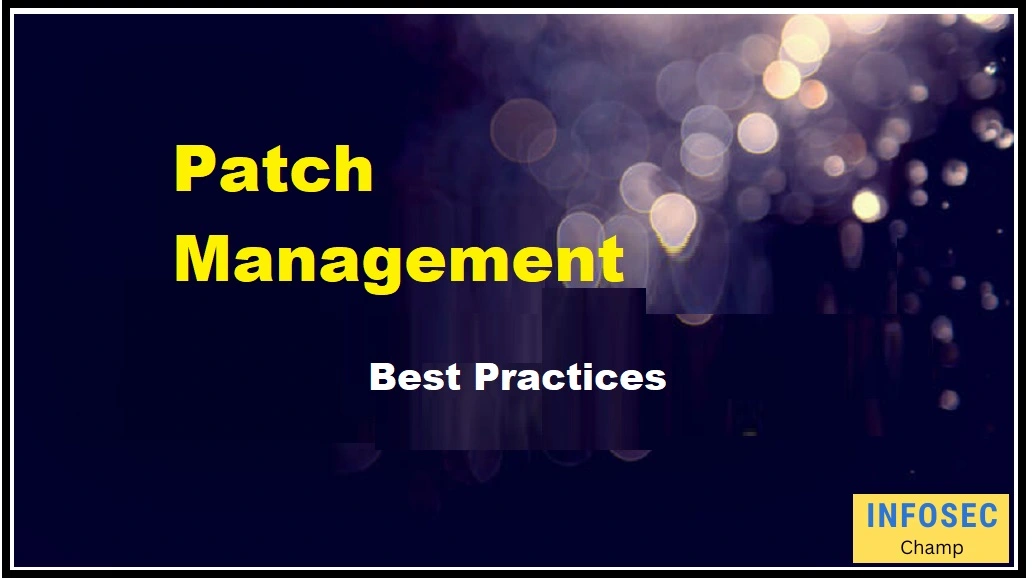
Top 11 patch management best practices
Here are 15 patch management best practices that organizations can follow:
- Automate the process: Automating the patch management process can help ensure that patches are applied in a timely and consistent manner.
- Test patches before deploying: It is important to test patches before deploying them to production systems to ensure that they will not cause any issues.
- Prioritize patches based on importance: Patch management can be resource-intensive, so it is important to prioritize patches based on their importance and the potential impact on the organization.
- Establish a patch management policy: Having a clear patch management policy can help ensure that patches are applied in a consistent and orderly manner.
- Communicate with relevant parties: Effective communication is important in patch management to ensure that all relevant parties are aware of the patches that are being applied and any potential impacts on the organization.
- Document the patch management process: It is important to document the patch management process, including which patches were applied, when they were applied, and any issues that were encountered.
- Regularly check for new patches: It is important to regularly check for new patches to ensure that systems are up-to-date and secure.
- Establish a patch management team: Having a dedicated patch management team can help ensure that patches are applied effectively and efficiently.
- Keep track of installed patches: It is important to keep track of which patches have been installed, as well as any patches that were not installed due to issues or other reasons.
- Use a patch management system: A patch management system can help automate the process of identifying, acquiring, and installing patches, as well as verify that patches have been applied correctly.
- Follow vendor recommendations: It is important to follow the recommendations of software vendors when applying patches to their products.
What are the selection criteria for patch management software tools?
When choosing patch management software products, companies should take into account the following factors:
- Compatibility: The operating systems, applications, hardware, and other software used by the company should all be compatible with the patch management software.
- Capabilities for automation: The program should be able to automatically find, obtain, and install patches as well as regularly check for new patches.
- Testing and staging capabilities: The software should offer facilities for testing and staging patches because it is crucial to be able to test patches before deploying them to live systems.
- Integration with other systems: The software must be able to work with other tools and systems that the company employs, such as security or systems management software.
- Scalability: The program must be able to accommodate the organization’s requirements, including the volume of systems to be managed and the frequency of patching.
- Cost: The software should be affordable for the company and offer good value for the money.
- Support and upkeep: The program must offer good alternatives for upkeep and support, such as regular upgrades and access to technical assistance.
In order to select patch management software that suits their needs and budget, enterprises should take into account these factors.
Patch management open source
A range of open-source patch management tools is available to help organizations manage system fixes. The following are a few well-known open-source patch management programs:
- OCS Inventory NG: This tool can be used to inventory hardware and software as well as to apply software updates and upgrades. It is compatible with Windows, Linux, and Mac operating systems.
- Patch Manager Plus: Patch Manager Plus is an application that can manage updates for a variety of Windows, Linux, and Mac programs and operating systems. It offers tools for automating the patch management process as well as for testing and staging fixes.
- Spiceworks: This solution provides a number of tools for managing and sustaining systems, including patch management capabilities, asset management, and help desk support.
- GFI LanGuard: This tool can be used to scan computers for bugs and unpatched software as well as to distribute updates to fix the problems discovered. It is compatible with Windows, Linux, and Mac operating systems.
Overall, these free open-source patch management tools can provide companies with a useful way to handle system patches. It is essential to thoroughly evaluate the features and compatibility of these tools to ensure that they meet the needs of the organization.
Patch management Azure
There are several alternatives for managing fixes for systems that are running on Microsoft’s Azure cloud computing platform.
In order to automatically locate, obtain, and install patches for virtual machines (VMs) running on Azure, administrators must use Azure Update Management. Using Azure Update Management, which also offers options for testing and staging patches before deploying them to live systems, it is possible to manage patches for Windows and Linux virtual machines.
Another security monitoring and management tool are Azure Security Center, which has the ability to scan Azure-based virtual machines (VMs) for security flaws and unapplied patches.
Overall, Azure provides a range of tools and features for patch management for platforms that are used by systems, helping organizations ensure that their systems are secure and up to current.
Patch management AWS
The cloud computing platform Amazon Web Services (AWS) offers a number of tools and services for managing patches for systems using AWS.
For administrators to automatically locate, acquire, and instal fixes for Amazon Elastic Compute Cloud (EC2) instances and on-premises systems, AWS Systems Manager Patch Manager is a key component. AWS Systems Manager Patch Manager can be used to manage patches for Windows, Linux, and macOS operating systems and includes tools for testing and staging fixes before deploying them to production systems.
Another tool with security assessment capabilities is AWS Inspector, which can check EC2 instances for flaws and unapplied patches.
AWS provides a variety of tools and services to help businesses manage updates for their platform-based systems, ensuring that their systems are secure and up to current.
Patch management Jamf | Patch management for ios | Jamf patch management
For systems running the macOS and iOS operating systems, Jamf is a tool for handling patches.
Jamf includes a wide range of patch management options, including the ability to automatically find, buy, and apply fixes. It also includes tools for testing and staging upgrades prior to applying them to live systems.
Patches for various programs, including the macOS operating system and third-party applications, can be managed via Jamf. It includes tools for software distribution and inventory management in addition to compatibility with iOS devices’ mobile device management (MDM).
Overall, Jamf is a comprehensive patch management tool designed specifically for managing fixes for iOS and macOS platforms. It can help companies make sure their systems are secure and current.
Ivanti patch management
Ivanti Patch for Windows, a patch management tool, can be used to handle patches for computers running Microsoft Windows.
Numerous patch management features are available in Ivanti Patch for Windows, including the ability to automatically find, buy, and apply fixes. It also includes tools for testing and staging upgrades prior to applying them to live systems.
Ivanti Patch for Windows can be used to manage patches for a variety of programs, including the Microsoft Windows operating system and third-party apps. It offers tools for software deployment, inventory management, and support for security and compliance reporting.
Ivanti Patch for Windows is a comprehensive patch management tool designed specifically to handle patches for Microsoft Windows systems as a whole. It can help companies make sure their systems are secure and current.
Ivanti Patch for Windows, as a whole, is a thorough patch management application created especially for handling patches on Microsoft Windows systems. It can assist businesses in making sure their systems are secure and up to date.
Qualys patch management
Using the patch management tool Qualys Patch Management, patches for computers running different operating systems, such as Windows, Linux, and macOS, may be controlled.
Qualys Patch Management comes with a number of patch management features, including the ability to automatically identify, get, and apply fixes. It provides tools for software deployment and inventory management, as well as choices for testing and staging fixes before applying them to live systems.
A company may get a complete picture of its security posture thanks to the integration of Qualys Patch Management with the company’s vulnerability management and compliance solutions.
In its entirety, Qualys Patch Management is a comprehensive patch management tool that can be used to handle patches for systems running various operating systems. It can help companies make sure their systems are secure and current.
Bigfix patch management
For computers running different operating systems, such as Windows, Linux, and macOS, BigFix is a patch management program that can be utilized.
A variety of patch management tools are available in BigFix, including the ability to automatically locate, purchase, and apply fixes. Along with tools for inventory management and software deployment, it also has options for testing and staging patches before delivering them to live systems.
BigFix also connects with other security and management technologies, such as compliance software and vulnerability monitoring tools, giving a business a complete picture of its security posture.
Intune patch management
Using the patch management tool Microsoft Intune, patches for computers running diverse operating systems, including Windows, Linux, and macOS, may be handled.
One of the various patch management capabilities offered by Intune is the capacity to automatically find, acquire, and install patches. It provides tools for software deployment and inventory management, as well as choices for testing and staging fixes before applying them to live systems.
Intune also communicates with other security and management tools like Microsoft’s Endpoint Protection and Microsoft Defender ATP to provide a holistic view of a company’s security posture.
Intune is a comprehensive patch management tool that can be used to manage patches for systems running various operating systems. It can help companies make sure their systems are secure and current.
FAQ:
1. Tanium patch management
For PCs running multiple operating systems, including Windows, Linux, and macOS, Tanium is a tool for handling patches.
Tanium includes a variety of patch management features, such as the ability to automatically find, buy, and instal fixes. It provides tools for software deployment and inventory management, as well as choices for testing and staging fixes before applying them to live systems.
Tanium also integrates with other security and management tools, including compliance programmes and vulnerability tracking, to provide a full picture of a company’s security status.
2. Linux patch management
“Linux patch management” refers to the process of managing patches for systems running the Linux operating system. This can require finding the appropriate fixes, buying them, installing them, and making sure they worked as intended.
Numerous technologies, including both manual and automatic patch management systems, can be used to patch Linux systems. Popular Linux patch management programs include Red Hat Satellite, SUSE Manager, and OCS Inventory NG.
The patch management procedure for Linux systems typically includes the following steps:
- Finding pertinent patches: To identify the patches required for the organization’s Linux systems, information from Linux vendors or security alerts must be reviewed.
- Patch acquisition and installation: Following the identification of the pertinent patches, the systems require their acquisition and installation. This could entail either manually deploying the patches or automating the process using a patch management system.
- Patch verification: After the patches have been installed, it’s critical to check that they were correctly deployed and that the systems are still operating normally. Running tests or reviewing system logs may be required to confirm that the changes were properly applied.
- Making a process record: It is also important to document the patch management process, including which patches were applied, when they were applied, and any issues that were encountered. The utilization of these documents can help you resolve issues and satisfy legal or regulatory requirements.
3. How patch management protects against ransomware attacks?
Ransomware defense can benefit from patch management, which ensures that systems are updated with the most recent security fixes. Since ransomware usually exploits system vulnerabilities to gain access and proliferate, keeping systems patched can help prevent ransomware from being able to corrupt them.
A defense-in-depth approach to cybersecurity should include firewalls, antivirus software, and user awareness training in addition to patch management.
